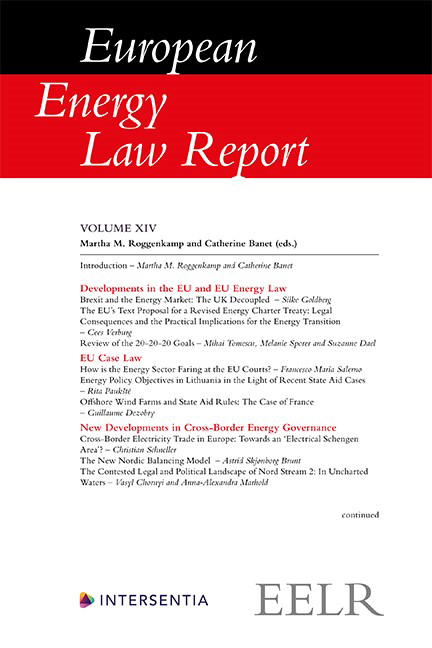Chapter XIV - The Regulatory Framework for Green Hydrogen Developments in the North Sea
Published online by Cambridge University Press: 26 May 2022
Summary
INTRODUCTION
Historically the North Sea area has been an important source of economic growth for the countries surrounding it. The North Sea is one of the most heavily exploited marine environments in the world. There is fierce competition for space, with several economic activities, including fisheries, shipping, sand and shell extraction, recreational activities, hydrocarbon production and wind energy generation, taking place in the area. The existence of areas for military use and nature reserves adds to the congestion, as each activity claims part of the available space.
The extent to which coastal States may regulate these activities depends on their location, and in particular whether they are taking place in territorial waters or the area beyond territorial waters, i.e. the continental shelf (CS) or the exclusive economic zone (EEZ). While territorial waters are considered part of the land territory and thus the sovereignty of coastal States under the United Nations Convention on the Law of the Sea (UNCLOS), coastal States were given sovereign rights to explore and produce hydrocarbons if they have a CS and to develop renewable energy sources if they declared an EEZ. As the seabed of the North Sea is one CS and all North Sea States have declared an EEZ, the development of hydrocarbons and renewable energy sources are subject to coastal States’ sovereign rights and functional jurisdiction. Based on their functional jurisdiction on the CS, North Sea States have explored for and produced large quantities of hydrocarbons using more than 600 offshore platforms and associated physical infrastructure. Given the gradual depletion of the offshore hydrocarbon resources and the need to meet the EU and national climate change goals, the North Sea States are now increasingly focussing on the development of offshore renewables and in particular offshore wind energy. Currently, 13 gigawatts (GW) of offshore wind capacity have been installed in the North Sea. In the medium to long term, this capacity is projected to grow to 60 GW by 2030 and to approximately 180 – 250 GW by 2050.
- Type
- Chapter
- Information
- European Energy Law Report , pp. 295 - 314Publisher: IntersentiaPrint publication year: 2021



